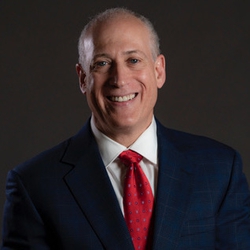If you properly hire, train and manage a new associate doctor, you earn more time to manage your practice. You have an alternate doctor for patients you don’t like. You deal with fewer emergency calls.
With a good associate, you help more patients. You get longer vacations and more time to pursue new challenges. Your profit and the value of your practice increases while you groom a potential practice buyer.
Of course, these associate benefits have a cost.
Now that you have hired your associate, how do you get the most out of him or her? The main key was during the hiring process. Your office has a philosophy, and the new doctor has to share your philosophy. Before sharing your philosophy with the applicant, ask the Doctor to tell you about his or hers philosophy. Ask what are their goals and if they are interested in partnership? If they are interested in a partnership, then what does that look like to them? Find out what motivates the doctor. Is it just money, or do they want to be a leader in their field?
You definitely want to make sure the new doctor agrees with your office’s protocols. You should ask them to demonstrate how they would treat certain problems, like heel pain. Have them explain their reasons. Show and discuss with them your protocols. Make sure they feel comfortable and understand why they need to follow the protocols to the letter. Also, can the associate follow orders and directions? Can he be easily trained. You can find this out during another interview, where the doctor follows you around.
During this interview, see if the doctor can relate to the patients, and if the patients are comfortable with the doctor. Give the doctor certain orders, like get me three references by Tuesday of next week, and please do not fax these references, just email them to me. See, if the orders are carried out to perfection.
After hiring the new doctor, there many things you need to do in order to make sure you get the most out of your associate. Besides the usual paper work, like obtaining the license, DEA number and malpractice insurance, etc., you and your associate will need to sit down and review your goals and expectations of the new doctor. What are your expectations during the first three months of his employment? How many patients should he be able to see per day, what should his PVV (per visit value) be, and when does he go out and visit doctors?
The office should have a practice manual with a complete job description and protocols written out. When I mean complete, I mean for every procedure imaginable that you perform in the office. The doctor should not see a patient for the first two weeks of employment. He should be following you and get to know the patients and how you treat them. Make sure they say the right things. They don’t say, “I think you have plantar fasciitis,” they say, “your condition is called plantar fasciitis.” This is a confident response. It make the patient feel comfortable and be able to trust you.
In the next blog, we'll go over more tests and training techniques for getting the most from your new associate. Your associate should alleviate some of the stress of your day – not add to it. If you need to learn how to properly train your associate to transform them into a productive team player, join the Top Practice Practice Management Institute today.
